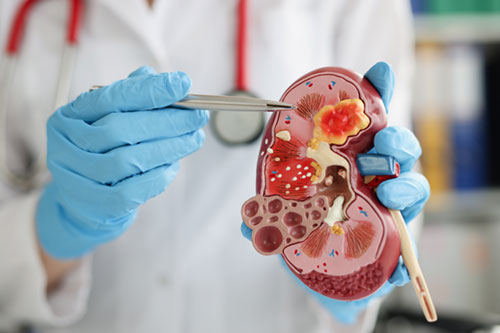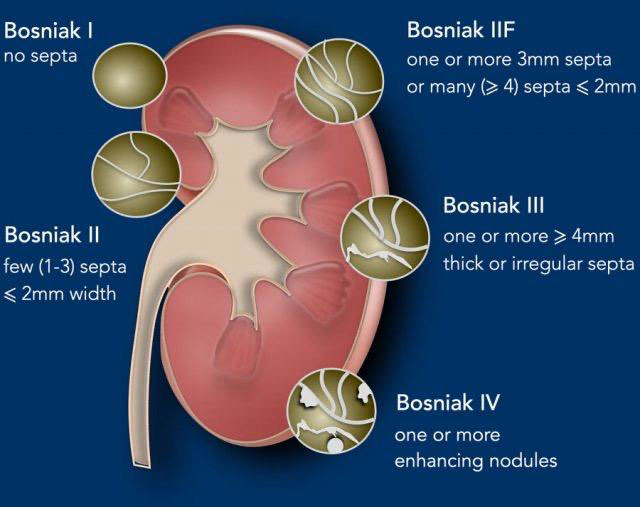What Are Renal Cysts or What Does the Term Mean?
These are fluid-filled regions in the kidney with a membrane, which generally do not communicate with the area producing urine. These tend to be of various sizes and based on their characteristics on scans, they are categorized into subtypes, which give us a more in-depth idea about the treatment plan. Most renal cysts are asymptomatic and are incidentally found on ultrasound scans, i.e., when a scan is done for another purpose unrelated to the cyst or symptoms of the cyst.

Around 20 percent of adults older than 40 years of age have renal cysts, while up to 33 percent above 60 years of age can have cysts, identified as per CT scans. While we too identify several of them, we need to understand which ones are harmless and which ones need to be monitored closely.
Is It Associated with Anything Serious?
There are certain cystic conditions of the kidney that one must be aware of, such as polycystic kidney disease. Certain types of cysts, especially Bosniak type III will need surgical intervention as the probability of harbouring cancer are higher, while Bosniak type IV are considered as malignant. Patients who are on dialysis also tend to develop cysts in the kidney, which are called acquired cysts. Rarely, there may also be a cyst related to an infection called parasitic cysts.
How Can They Present or How Will I Know I Have a Renal Cyst?
Renal cysts are usually asymptomatic and identified incidentally. In a few cases, it can present with pain due to a large cyst, bleeding inside a cyst or with fever due to an infection within the cyst. Occasionally, there may be blood in the urine.
When Are We Worried When It Comes to Cysts?
We are going to be concerned about cysts when they show signs that they may be infected or cancerous or have a bleed. Few people can have polycystic kidney disease, which is the presence of multiple kidney cysts along with a decline in renal function.
How Do We Investigate Renal Cysts?
Ideally, a CT scan of the kidney, ureter and bladder region with contrast will be done, to check for certain characteristics within the cyst and they will be graded as per Bosniak classification. This gives us an idea during follow-up if there are any new concerning features or if the cyst continues to be harmless. The grades are I, II, IIF, III and IV.
How to Manage If I Have an Ordinary Cyst?

We just need to do regular follow-ups for the cysts on a yearly or bi-annual basis based on how they appear in the scans. Most simple asymptomatic cysts may not need any treatment.
How to Manage in Case I Have a Cyst Which Is Symptomatic or Has Concerning Features?
Those cysts that are large, have a bleed within them or are infected, need to be managed with laparoscopic surgery where removal of the wall of the cyst (membrane) and drainage of the fluid is done. In case there is a suspicion of cancer in the cyst, we can remove the portion of the kidney with the cyst via laparoscopic or robotic partial nephrectomy. Less commonly, removal of the entire kidney will be done in case of a cancerous cyst involving the entire kidney, or for a cyst that does not allow us to save adequate functional tissue of the kidney. Also, in the case of polycystic kidney disease, removal of the kidney might be needed to plan for future placement of the transplanted kidney. All procedures have a short hospitalization and recovery time.
To conclude, most renal cysts are benign and do not require any active treatment. The few that do need any intervention can be managed with minimally invasive surgery. Regularly follow-up with your urologist in case a cyst is identified for appropriate management.

Dr. Anu Ramesh
MS, DNB (Gen. Surgery), MRCS (Edin), MCh, DNB (Urology),
Consultant Urologist,
Kauvery Hospital Chennai

